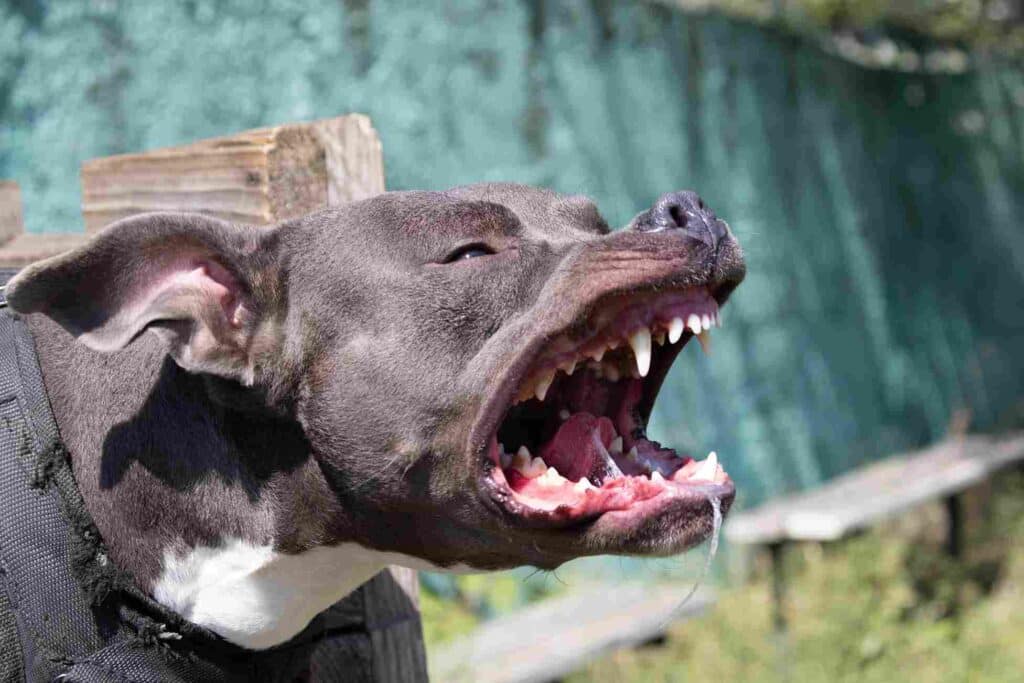While everyone ooh’s and ahhh’s at cute puppies and adorable dogs, according to the CDC, there are over 4.5 million dog bites in the United States annually. Even more staggering is the fact that 1 out of 5 people who are bitten end up needing medical attention.
In Minnesota, dog bites fall under Minnesota Statute 347.22, which states that a dog owner or caretaker can be held liable for any damages caused by their pet if they were aware of the animal’s dangerous propensities and failed to take reasonable precautions to protect others from harm. What this means is that if a dog owner is aware that their pet may pose a risk to others yet fails to act, they can be held accountable for any harm the animal causes.
But how does this play out in the real world? What does it actually mean?
Here’s everything you need to know about negligence, liability and causation in dog bite cases.
Who Had Ownership or Control of the Dog?
In a dog bite case, establishing who had ownership or control of the dog is a critical first step in the process.
Ownership is a pretty self-explanatory term, and can often be proven through witness testimony or documents such as registration papers and veterinary records. It’s important to note that in some cases, multiple parties may have ownership rights over a particular animal. When this occurs, more than one party could potentially be held responsible for damages related to a dog bite incident.
Control, on the other hand, refers to who was caring for and handling the dog when it bit someone else. Say, for example, that you are watching your neighbor’s pet while they’re out of town and it bites someone while in your care. In this scenario, you could potentially be found negligent in court since you were the one in control of the dog at the time the incident occurred.
Does the Dog Have a Track Record of Aggressive Tendencies?
When it comes to proving liability in dog bite cases, recognizing a dog’s propensity for violence is a critical element.
For example:
- Does the dog in question have prior instances of aggression such as bites or attacks on people or other animals?
- Have neighbors complained about barking and growling?
- Is the breed considered “aggressive”? (Rottweilers, German Shepherds, Pit Bulls, Great Danes, etc)
- Have previous reports been made against the same dog regarding its behavior?
If the answer to any of these questions is yes, then this could serve as proof that its owner or handler was aware of its potential danger.
In addition, the courts will also consider whether the individual acted responsibly after learning about the pet’s temperament. More specifically:
- Did the owner take steps such as professional training?
- Was their pet restrained at all times?
If so, then there is the possibility that they will not be held liable, regardless of how dangerous they knew their animal could potentially become under certain circumstances.
It is critical if you’re victimized in a dog bite attack to understand what proves neglectfulness so that you can seek legal action and collect compensation for the injuries you have sustained. Retaining experienced legal counsel will help ensure that your rights are protected during every step of this process.
Can Negligence Be Established?
To prove negligence, you must be able to prove that the owner of the dog had knowledge of its dangerous propensities and did not take sensible measures to protect others from harm. This includes:
- Letting the dog run loose in public
- Not restraining the dog, when necessary
- Not providing adequate warning signs when visitors are present on premises where the animal lives and/or roams freely
There must also be causation between any negligent behavior and the resulting injuries you sustained in a dog bite incident. Evidence such as medical records and photographs that document your injuries can help support this claim, while testimony from witnesses who observed what happened during an attack can provide additional corroboration.
Is There Enough Evidence to Prove a Proximate Cause?
Proximate cause establishes the link between the defendant’s negligence and the victim’s injuries, and is an essential element of a personal injury case. In other words, it shows that the dog owner’s actions – or lack thereof – were directly responsible for causing you harm.
To establish proximate causation, you must demonstrate that the injuries you have sustained were foreseeable as an outcome of the dog owner’s behavior. This means proving how your injuries could have been anticipated by a reasonable person in similar circumstances given what was known at the time. So, in your case, that the dog owner was aware of their dog’s aggressive nature, yet failed to take precautionary steps, and therefore should be held responsible for the bite and the subsequent injuries you sustained as a result.
It is also important to consider whether there were any outside circumstances that may have contributed to or caused the incident, which would then break this chain of causation and absolve the dog’s owner from liability all together.
In addition to this, the courts will also consider whether multiple people had a hand in the incident. If so, 2 things could potentially happen:
- Each could potentially be responsible for damages.
- Even though more than one person may be equally at fault, only one is held accountable due to limited resources available (i.e., insurance coverage). This is known as “joint and several liability,” and ensures justice is served, despite having various negligent actors with varying degrees of culpability involved.
Demonstrating proximate cause can be a complicated process, yet one that is necessary to help strengthen the validity of your claim.
Do You REALLY Want to Try and Do All of This on Your Own?
When it comes to proving liability in dog bite cases, retaining legal counsel will help ensure that your rights are protected. A personal injury lawyer who is well-versed in dog bites will collect and analyze all the evidence to determine liability, as well as calculate what you are legally entitled to.
An experienced personal injury lawyer will:
- Investigate the incident. This includes:
- Collecting witness statements. It’s important that other people be able to corroborate what you are claiming.
- Curating medical records, which provide intimate details about the severity of your injuries and can be used as proof that you were injured due to someone else’s negligence. Your physician should be able to furnish duplicates of any pertinent medical documentation associated with your care following a dog bite.
- Analyzing photographs. Photos of your injuries shortly after you sustained them can help prove their severity, while an ongoing photo montage will help document their progression over time. Capturing the images immediately after the incident took place ensures there can be no disagreements regarding when they were taken or how far back the event happened.
- Negotiate a Settlement. Your attorney will determine liability and then negotiate with insurers and other involved parties to secure the highest possible compensation for your losses, which often include:
- Economic Losses
- Medical bills associated with the treatment of the physical injuries you sustained, including hospitalization fees, doctor visits, medication costs, physical therapy sessions, lab tests, and x-rays if necessary. Depending on the severity of your injuries, these could add up quickly, so keeping all treatment receipts to assess damages accurately is essential.
- Lost wages due to time off work
- Non-Economic Losses
- Pain and suffering, which often requires expert testimony about how much distress the incident has caused you. This is usually determined by considering factors like duration of pain/injury, impact on quality of life, and the long-term effects.
- Emotional trauma and psychological distress, such as fear, dread, depression, and PTSD.
- File a Lawsuit. When negotiations have been exhausted without a satisfactory outcome, litigation may be the only remaining recourse. With their expertise and understanding of the complexities of your specific case, an experienced personal injury lawyer will devise tailored strategies designed to help you obtain the most favorable outcome. This will include:
- Determining who should be named as the defendant.
- Proving that the defendant was negligent in their duty of care towards you, which resulted in your injuries.
Let Us Help You Get the Compensation You Deserve
Proving liability in dog bite cases can be complicated and overwhelming. Working with an experienced attorney who understands the nuances of Minnesota law is essential to ensuring you receive the compensation you rightfully deserve.
At Nelson Personal Injury, LLC, we are well-versed in determining liability, establishing negligence and proving proximate cause. We will use our past experience and knowledge of Minnesota case law to draw upon legal precedents from similar dog bite cases to bolster your case when negotiating with the insurance company, and litigating in court, if necessary.
Contact us today for a complementary case evaluation. We look forward to speaking with you!




